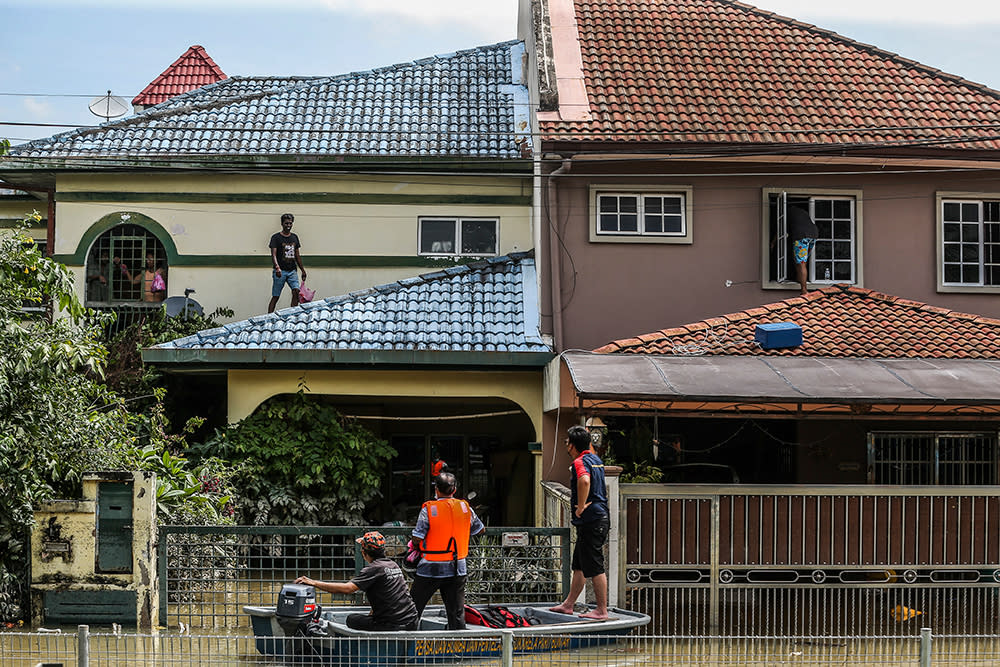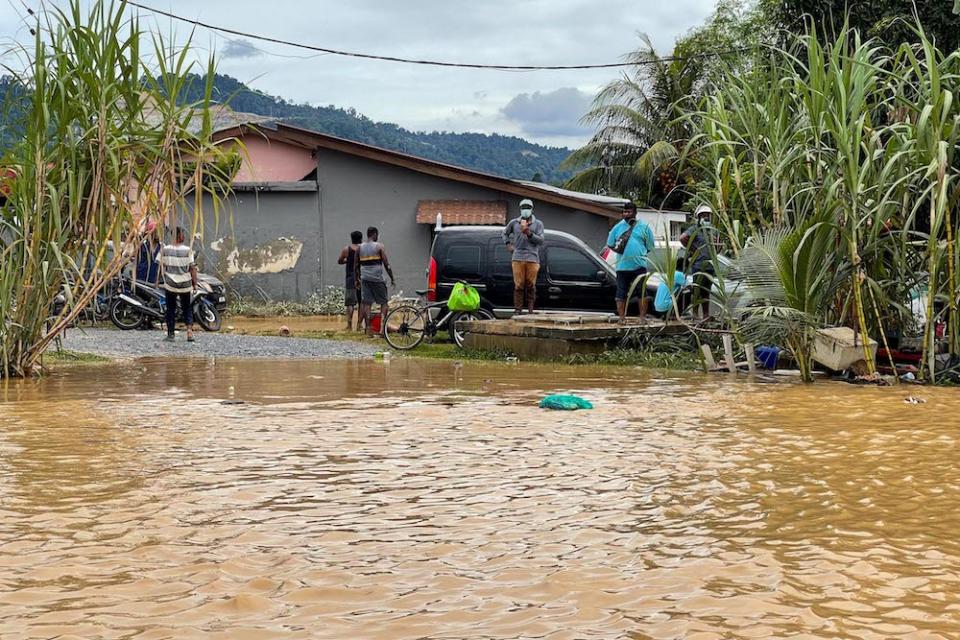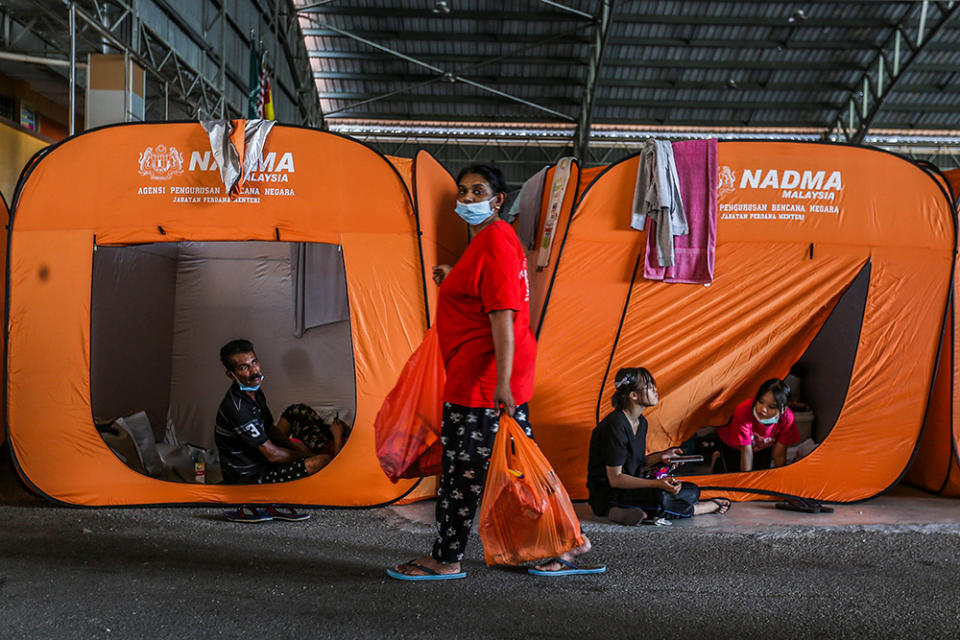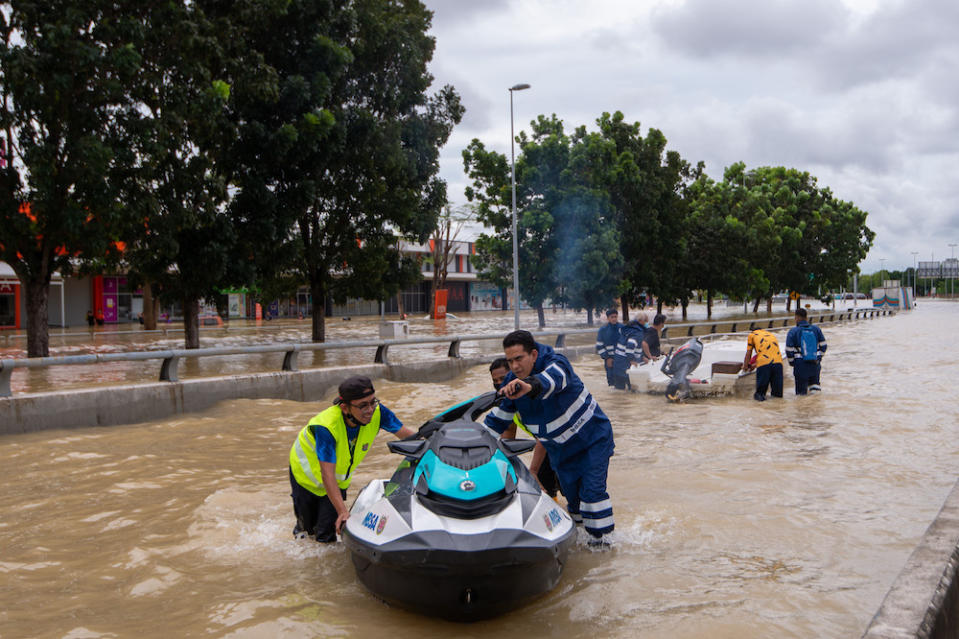Getting Malaysians involved in disaster drills: Overcoming the ‘hearing fire alarm but not knowing what to do’ problem

KUALA LUMPUR, Jan 2 — Malaysians would be more prepared for disasters such as the massive recent Selangor floods if they had a chance to practise through mass drills like those held in other countries, which could reduce disaster losses and impact as well as enable more efficient rescue activities, disaster management experts have said.
Khamarrul Azahari Razak, director of Universiti Teknologi Malaysia’s Disaster Preparedness and Prevention Center (DPPC), said Malaysia should establish “a large-scale disaster scenario based on extreme weather events” and carry out frequent drills and full emergency exercises led by the communities based on such scenarios.
He noted that the authorities in Malaysia would normally carry out drills and exercises in October, which is the National Disaster Preparedness Month, to practise things such as improving communication between agencies, but said some of the scenarios used for the drills were small scale.
“They don’t actually mobilise evacuation of 2,000 people at 2am in the morning. So that’s why I’m suggesting maybe in the future, we may increase the level of preparedness by considering a large-scale scenario. Then we need also to involve the community in this, it’s not only the related disaster agencies,” he told Malay Mail when contacted recently.
While it would not be easy to involve tens of thousands of civilians during disaster drills, Khamarrul noted that countries such as Japan and the Philippines actually carry out such drills involving citizens at a large scale.
“Yes, in the Philippines, they did it throughout the country, not at state or district level, I was there during national drills. In Japan there was also a national drill where they practised how to evacuate, and what are the list of numbers to call during an emergency. They make it part of national day,” he said.
He said many of the recent flood victims in Selangor may not even have emergency numbers stored or saved in their mobile phones, and have no clue who to contact to ask for help during the floods.
“So this is chaotic, and may disturb the chain of command because everybody is trying to seek help and trying to respond as soon as possible. Some even sent coordinates of their houses, but you already disturbed the process of evacuation and search and rescue, because they can’t really bring in one boat for you only without considering the others, without considering other methods during operations,” he said, adding that the Selangor floods situation was chaotic on the night it happened as rescuers had to handle quite a number of flood victims at one time without having actually practised physically earlier for such a large scale scenario.

With countries like Japan, Indonesia and the Philippines making such disaster drills as part of the normal practice, Khamarrul said this might not be easy to do but could be achieved with “strong will” by the state governments and district offices, suggesting that Malaysia start small first at the community level — such as Taman Sri Muda or Hulu Langat — before expanding the drills to the district level and then to the state level.
“You have to make it as part of a habit, part of the practice, start first at the local level, and you can increase at the communal level, mukim or village level. But I haven’t really seen these drills becoming a priority, because they just think waste of time, waste of money to do it,” he said.
In underlining the importance of properly documenting such disaster scenarios and preparing in advance, he pointed out that the Selangor floods, for example, showed residents as needing quick and rapid assistance and would not be able to wait to be assisted several hours later.
Asked if Malaysia should have a national drill day, he said this should be done.
“Absolutely, you see in some scenarios, like the last monsoon, we are talking about 50,000 or 60,000 people evacuating at one particular time. Pahang, Kelantan, Terengganu — they make a perfect scenario, they are prepared to handle big scale, but in Selangor, they underestimate, they don’t think they will face such large scale,” he said.
“Low cost, high impact, and rapid mobilisation are core factors to empower the local communities for large-scale disaster preparedness and early education,” Khamarrul also said.

Examples of disaster drills abroad
Based on news reports, large-scale disaster drills abroad include quarterly simultaneous earthquake drills in different cities nationwide in the Philippines with an estimated 13,350 persons joining in the November 2019 drill for example, although such scenario simulations and evacuation drills have since shifted online due to the Covid-19 pandemic. Metro Manila in the Philippines in July 2019 had even scheduled an earthquake drill at 4am for a more realistic scenario.
In Indonesia, the country’s National Disaster Mitigation Agency had in 2019 said it would hold disaster mitigation classes at 250,000 schools or 75 per cent of schools in disaster-prone locations in light of children being among the most vulnerable groups during disasters and with plans to include comics, games and short films as the educational material, and had also planned to hold a nationwide disaster drill at schools on the country’s Disaster Alertness Day (April 26).
In Japan, the prime minister participates in emergency drills in conjunction with the country’s Disaster Prevention Day on September 1, while earthquake and tsunami drills in conjunction with the country’s Tsunami Disaster Prevention Day on November 5 had involved 1.08 million participants and 910,000 participants in 2019 and 2020. Japan’s Cabinet Office’s Disaster Management Bureau website also publishes a White Paper on Disaster Management every year.
Taiwan’s natural disaster drill in September 2021 for example involved the sending out of text messages to mobile phones nationwide for a simulated earthquake warning as well as a tsunami warning for residents of coastal areas, as well as television channels simultaneously broadcasting disaster prevention information for a scheduled two minutes.

‘Hearing a fire alarm but not knowing what to do’
Universiti Sains Malaysia researcher Khairilmizal Samsudin spoke about the National Security Council Directive No. 20 which is a policy document on the government’s disaster management response activated when emergency situations reach district, state or federal levels.
While saying that the Selangor floods had activated support from the federal level due to their magnitude and impact, he noted the issue was that the community in Selangor was not prepared or taught how to face such a disaster.
“Federal and state governments need to empower the community through disaster preparedness programs. It’s like ‘hearing a fire alarm but don’t know what to do?’.
“MET Malaysia issued multiple warnings, but does the community know what to do? If the community only waits for responding agencies’ action, it may be too late already,” the lecturer at USM’s School of Health Sciences’ Environmental and Occupational Health Programme told Malay Mail when contacted recently, referring to the Malaysian Meteorological Department.
“Developed countries like Japan, the US, UK minimise impact and losses during a disaster by empowering their community, educating them since kindergarten. When a community is prepared and has the basic response needs, surely the response effort by responding agencies will be much faster.
“Taking the example of Aceh, Indonesia after the 2004 tsunami, the moment the community heard a tsunami alarm, everyone will be at the designated tsunami shelter within one to two hours without much intervention needed by responding agencies. In this case, responding agencies can concentrate their effort on people who are really in need of assistance,” he noted when stressing the importance of educating the community to evacuate on their own upon alert.
Steps to consider would also be how the authorities or local agencies could provide disaster warnings to the public, such as through alarms or text messages through SMS or Whatsapp to community groups, he said.

How Malaysia’s disaster victims can help during and after evacuations
Khairilmizal said another key role that communities could do is to support the lead responding agencies during disasters, noting: “When agencies ask them to evacuate, yes, they should evacuate. When agencies ask them to go to the evacuation centre, when the authorities stated ‘please stay at the centre, don’t go out because we want to prevent any traffic congestion in the area’, they should listen, they should give cooperation to the authorities. This is the only way emergency management can be effective if everyone works together. Victims and responding agencies need to cooperate with each other.”
He noted that failure by the community to evacuate as instructed would result in the responding agencies having to come in and rescue the disaster victims “when it’s already too late”, pointing out that these would end up endangering rescue personnel who also have families and loved ones.
For flood victims who had already been evacuated to temporary evacuation centres, they can also help play a supporting role by assisting the authorities and working together such as in terms of food preparation and maintaining the hygiene at the centre, he said.
Besides stressing the importance of emergency exercises or drills that can help prepare communities to evacuate when the time comes or to increase the timeliness of disaster response, he noted the need to prepare an emergency kit and for the authorities to educate the public about this.
“Like what happens in developed countries, the authorities train the community to have their own emergency kits. They have flashlights, spare clothes, all their documentation in place, their insurance, property deed, everything is in there,” he said when pointing to this as a solution to prevent the loss of important personal documents during disasters like the recent floods.

Tips to prepare for disasters and why community involvement matters
In Malaysia, October is marked as the National Disaster Preparedness Month every year with a minister stating in 2015 that this was considered a suitable month as the monsoon season typically starts around November. This is also in conjunction with International Disaster Day on October 13.
On October 5, the National Disaster Management Agency (Nadma) said preparing for disasters starts at home and that it was a shared responsibility with collaboration needed between government, private sector, non-government organisations (NGOs) and individuals, stressing the need for civil preparedness to be a culture or for the community to always be ready instead of merely hoping for aid from government agencies and NGOs when disasters occur.
Nadma had said 36 programmes were scheduled throughout this October including community-based disaster risk management through collaboration with agencies and NGOs, while saying that the culture of being prepared should not be practised only in October but should be a continued norm until Malaysia achieves community resilience.
Public awareness posters on Facebook by the authorities during the National Disaster Preparedness Month include Nadma’s October 30 posting of a poster on safety tips during floods, which include preparing an emergency kit, evacuating early before the flood conditions worsen, and immediately evacuating to evacuation centres when ordered to do so.
The Selangor floods had seen some flood victims resorting to climbing to rooftops as they awaited rescue and help. Nadma observed that some victims had refused initial advice to evacuate due to worries about contracting Covid-19 at evacuation centres as well as concerns about losing their belongings or due to believing this was just another flash flood, and that they had to be rescued when flood conditions worsened.
On October 15, the Malaysian Meteorological Department meanwhile posted a poster to support the idea of every household preparing an emergency bag for earthquakes and tsunamis and to list the items that should be included in such a bag.
Do Malaysians know where to get early warnings and what it means?
National news agency Bernama on December 29 reported the Malaysian Meteorological Department as confirming that its social media accounts such as Facebook which provide the latest weather updates used to record around 100,000 visitors per day, but that the number of online visitors has increased tenfold to one million visitors per day following the recent floods.
While the Malaysian Meteorological Department’s updates may be useful in terms of weather forecasts such as giving out yellow, amber and red alerts for expected heavy rain or warnings for thunderstorms, it does not also give out warnings about possible floods or what the public is required to do in response to these alerts.
Its Hong Kong counterpart, the Hong Kong Observatory, plays a different role where it also issues warnings for weather-related hazards on top of monitoring weather; and also has a three-colour alert system (amber, red, black) for heavy rain along with guides on required public action and also issues special announcements on expected floods in a low-lying flood-prone area in Hong Kong.
In Malaysia, the government body tasked with providing early warnings of possible floods is actually the National Flood Forecasting and Warning Centre (PRABN) under the Department of Irrigation and Drainage (DID). Efforts to improve the advance forecast of monsoon floods (such as giving out warning of monsoon floods two days ahead instead of six hours earlier) are being implemented in stages, according to information provided online by PRABN.
The DID maintains the publicinfobanjir.water.gov.my website, which displays the latest water levels at rivers in various states throughout Malaysia, with colour-coded alerts ranging from colours such as green (normal), yellow (water level exceeding the river’s alert levels), amber (exceeding warning levels), and red (exceeding danger levels). Such alerts on the website do not come with instructions on what the public is required to do, such as at which stage they are required to evacuate.
Those who visit the Public Info Banjir’s Facebook page (PublicInfoBanjir) and Twitter account (@JPS_InfoBanjir) will however be able to view the latest notices by PRABN on predicted floods in specific districts in a state and the date and time when such floods are forecasted to happen, with such forecasts also being based on the Malaysian Meteorological Department’s weather forecasts.
The flood forecast notices by PRABN do not come with instructions on whether the public needs to prepare for evacuation, but urged all disaster management agencies and residents in areas expected to be flooded to be alert and to follow the authorities’ instructions.
For those who need some tips, the DID website has a detailed guideline or checklist of what Malaysians should do before, during and after flooding.
In Japan, a five-level alert system with different colours — introduced after the country’s 2018 floods which claimed more than 200 lives — informs the public on what to do, with a Level 1 alert being an early advisory to stay alert, Level 2 being a heavy rain and flood advisory and with the public required to check how to evacuate using a hazard map.
A Level 3 alert would be typically when there is a flood alert and heavy rain warning and with those who need more time to evacuate — such as the elderly and disabled — needing to start evacuating, while Level 4 — typically when there is flood danger or landslide alert — is when everyone is required to evacuate and Level 5 is when everyone has to take the “best action” to protect their lives such as moving to a safer upper room as a disaster has already happened and it may be dangerous to move outdoors to an emergency evacuation site.
Related Articles Don’t turn floods into swim fest, Johor Fire and Rescue Department warns public Dept of Irrigation and Drainage warns of dangerous conditions around rivers in Pahang, Selangor, Johor, N. Sembilan and Melaka Number of flood victims continues to increase in seven states



